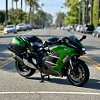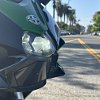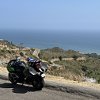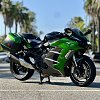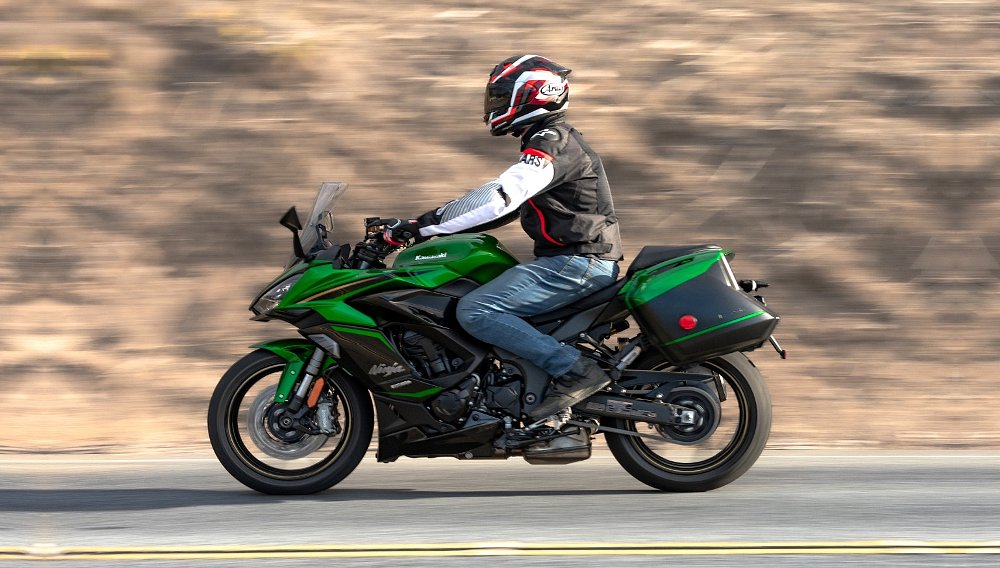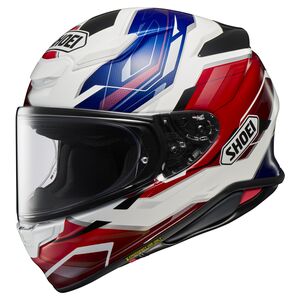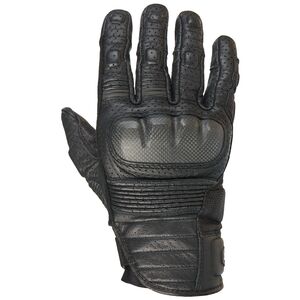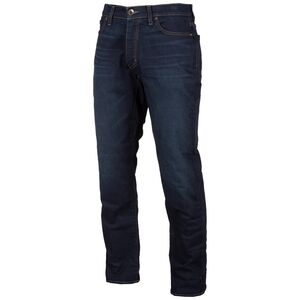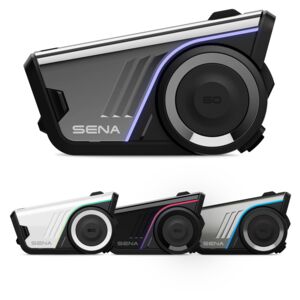The Kawasaki H2 SX SE is a motorcycle that’s all about being big. It makes more than 200 horsepower, weighs 600 pounds, and offers some of the most extravagant features available in the market today. It also has one, huge problem.
But, for now, just look at it in the light and let it shine. Shimmering green paint, swoopy lines, and the titillating words “SUPER CHARGED” etched in the side of the engine. It’s pretty, and bold, and pretty bold. Most of the mechanical data about the H2 SX was covered in Lance’s first-look article, and then all of that data was mulled over quite a bit more comprehensively when Lemmy spent a couple of days riding the original, 2018 model.

If you can’t be bothered with any of those few thousand words, here’s a quick snapshot: The H2 SX SE has a 998 cc inline-four-cylinder engine that revs to about 12,000 rpm and a supercharger impeller that hits nearly 10 times that rpm as it forces air into the engine at an unnatural rate, providing more power and sometimes an odd noise. ‘Round about 2022, the H2 sport-tourer received a line of luxury updates including radar-assisted cruise control, electronically adjustable suspension, and a new, 6.5-inch TFT dash unit.
In other words, it is foundationally the same machine that Kawasaki unveiled nearly a decade ago, but it has been brought up to date to match the current state of the art. As it should be, for what is clearly a flagship in Kawasaki’s lineup and a unique machine. The base price has also been brought up (to date) and stands now at $29,100.
Supercharged super-touring
In our review of riding the bike seven years ago, Lemmy spent a fair amount of time talking about how the violent side of forced induction can be a real hoot. He was right to harp on that point, because beyond the H2 SX SE being fast (which it is) the engine is flippin’ majestic. It’s incredibly smooth and even more satisfying to use. I never got tired of pointing this bike up an on-ramp to the highway and holding it wide open in first gear, letting the front wheel bounce gently off the invisible ceiling of wheelie control, and then yanking in the clutch lever to hear the wild chirp from the airbox, like an exotic bird stubbed its toe.
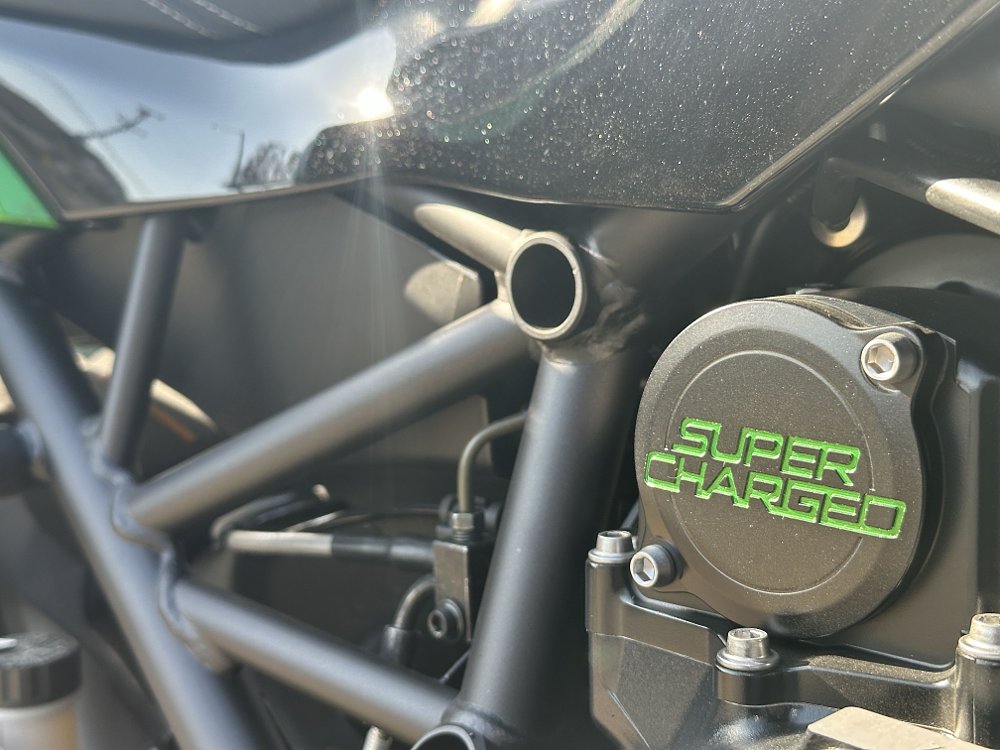
As rich and striking as the supercharged powerplant is, the rest of the bike pretty much matches it step for step. The seat is thick, the fairing and fuel tank are broad, and the handlebars are set wide and fairly low. It’s comfortable, but there’s a clear sporting bent on the rider triangle. It feels like a serious bike from the cockpit. You feel the weight as it comes off the kickstand, but it’s not just heavy. The heft is smooth and taut, with a hint of purpose about it, and so it feels less like picking up something heavy and more like shaking hands with a body builder.
The H2 SX is pretty friendly to ride, too, even being an intimidating and expensive lump of rocket power. Similar to Suzuki’s Hayabusa or Kawi’s own ZX-14R, there’s a regal feeling from a machine that never needs to work very hard to go faster than anything else on the road. On a gentle ride along a twisty road it dances nicely from side to side, feeling competent and undeniably stable.

I rode the H2 SX SE from the RevZilla West offices in Los Angeles to Monterey, California in order to attend California Superbike School and ride an even faster motorcycle on a race track. All told, I logged two full days of touring, a couple of weeks of commuting, and at least one day of testing in and around L.A. and San Diego Counties. It was a more rigorous test than we give most bikes around here.
After more than 1,000 miles in the saddle, I came to learn that the bike is not ultra agile and it doesn’t want to sprint from turn to turn with puppy energy. The H2 is powerful, but also stately and calm, with a solid chassis and sharp brakes. It does everything right, in other words, just not quickly. To go along with the heated grips, center stand, and lovely Givi luggage, it doesn’t hurt that there are now state-of-the-art touring features plastered all over the H2 SX SE.
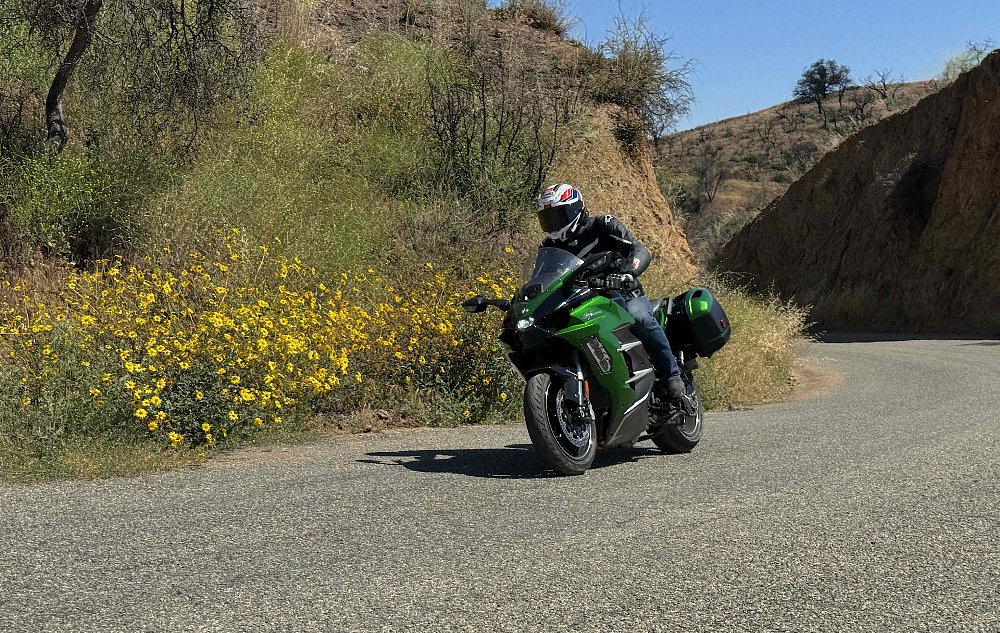
Little orange LED triangles embedded in the mirrors use information provided by the front- and rear-facing RADAR units to inform the rider if there’s a vehicle in their blind spot. It’s a similar system to the one on Ducati’s Multistrada V4 I tested a few years ago. It never feels as necessary or even useful on a bike as it does in a car, but it works pretty well.
Same goes for the RADAR-assisted cruise control, which adapts to the speed of the vehicle ahead and can be adjusted to one of three speed-adaptive distances (Near, Medium, and Far). When I’m stuck behind a lumbering cager on a two-lane road I love being able to ask the bike to follow at a safe distance and keep my itchy wrist from wanting to pass around every curve. When a passing zone presents, the H2 SX will zap anything in its path without breaking a sweat.

One aspect of the Adaptive Cruise Control that I did not appreciate was how to adjust it on the fly. It was impossible, as far as I could tell. At first I tried every combination of buttons I could think of; hold this, tap that, clutch in, throttle off, et cetera. Nothing. Then I asked Kawasaki, and I was sent a tutorial video on how the systems work. After that didn’t help, I essentially told our media contact at Team Green that I’m going to tell everyone on YouTube that it cannot be done unless it can be explained to me. They could not, and so I published the Daily Rider video (above) saying that the ACC cannot be adjusted while riding.
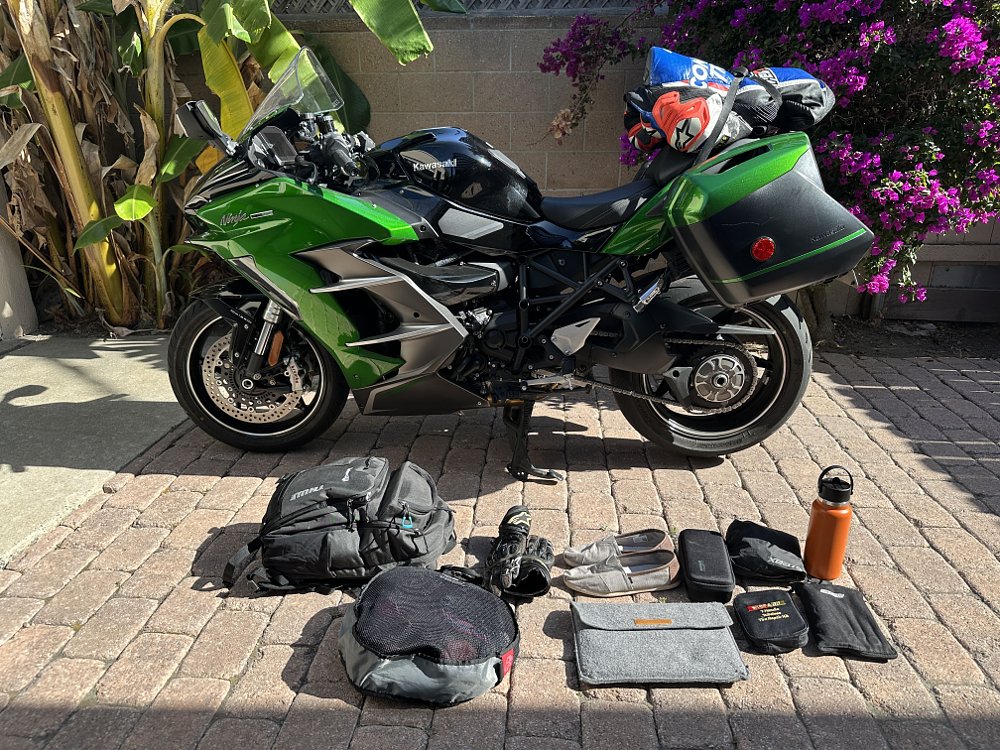
Not long after, the good people of The Internet informed me (and Kawasaki USA) that it can, in fact, be adjusted on the fly. You simply have to hold the “Fn” button down and then tap one of the “Mode” switches, up or down. Duh, Zack! Maybe I feel a little sheepish having not tested literally every combination of buttons, but in my defense the buttons are complicated enough that the company itself didn’t have the answer.
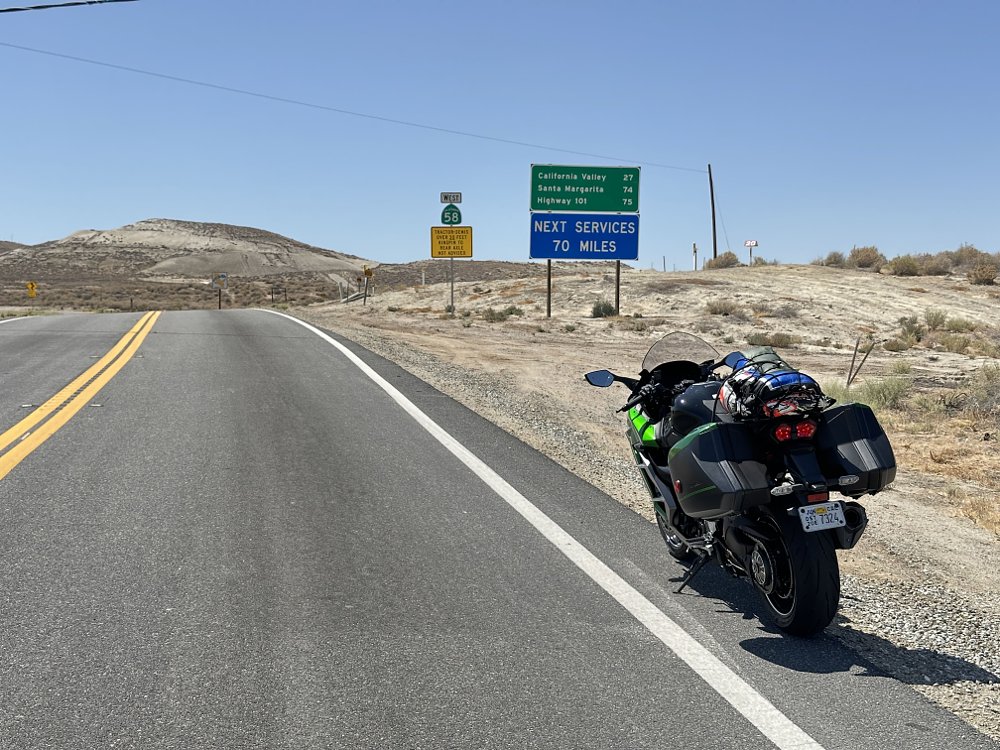
If it were the only snafu in the H2 SX’s user interface I might let it slide, or better yet take the blame, but it’s a mess in general. Changing modes requires pressing and holding the “Mode” buttons for an awkward amount of time, all the while looking down at the dash to make sure it worked — plus the menu isn’t cyclic, so if you’re at the “bottom” of the menu and want to get to the top you have to laboriously hold the opposite button down and watch the dash again. There could so easily be a single button that the rider taps to select and then rolls off the throttle to engage, like other brands do.
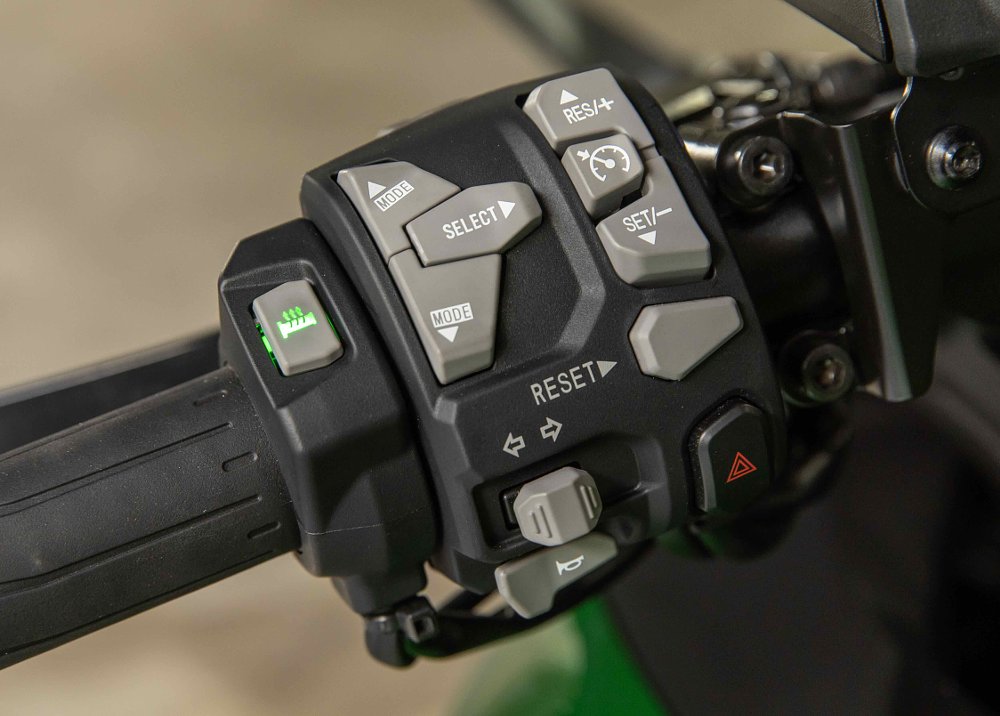
Nice as heated grips are to have, Kawasaki’s system is somehow terrible. A button just inboard of the left grip triggers the system, which is great. Sadly, it displays the chosen setting by a series of blinks in the backlit button; three blinks is high, two is medium, one is low. So, as you navigate that twisty road at dusk and your hands get chilly, imagine switching on the heated grips and then staring down at the handlebar counting blinks, all the while hoping there isn’t any wildlife jumping out of a ditch just ahead. Show me the setting on that big, beautiful TFT, or at the very least have the heat setting color-coded.
Now, how about that Auto High Beam feature? A bike that dims the headlight for oncoming traffic at night is a neat automation, or at least it’s worked well in cars I’ve driven. Alas, when the setting is on it disallows the high beam to be triggered at all during the day, and even worse the menu isn’t available while the bike is moving. For a coupla cherries on top, cruise control has a max speed of 85 mph and the blind-spot-warning lights aren’t quite bright enough in the day.
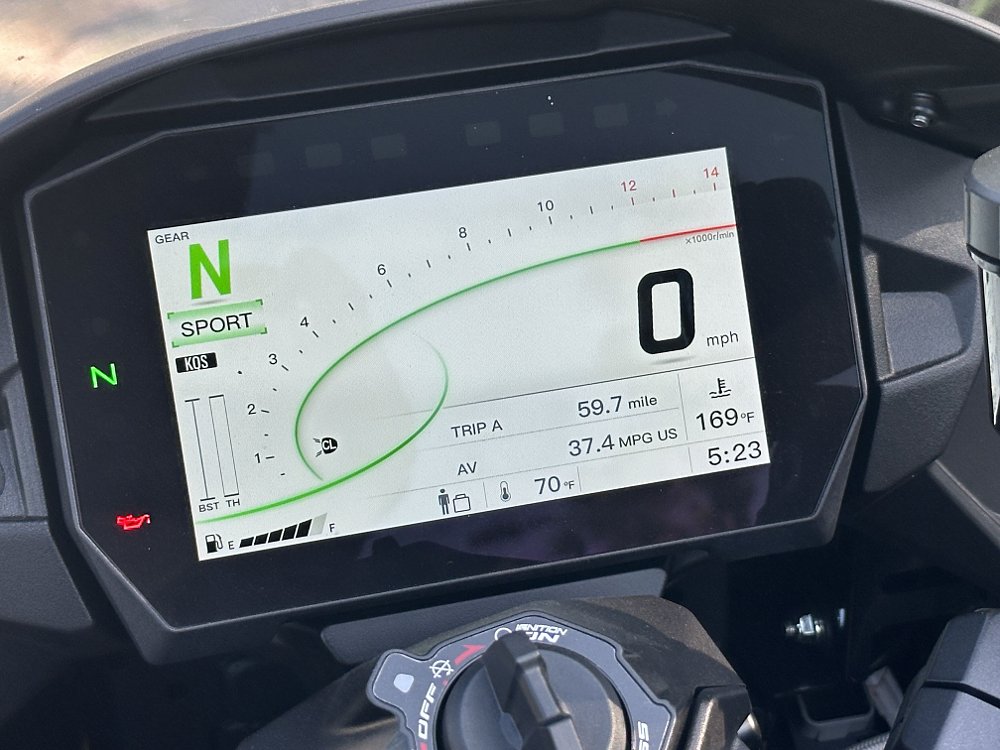
Of course, all of these complaints have me wondering if the H2 SX SE actually does show heated-grip settings on the dash and allow the high beam to be used in the "auto" setting during the day, since I fumbled the ACC adjustment. What I will stand by is that the switch cluster stinks. Why do I press “Reset” to go back in the menu system? Why do I hold the button in the middle, with the right arrow, to change suspension settings? It all feels like Kawasaki engineers were backed into a corner with this specific switchgear or they just didn’t think it through.
Ointment, meet fly
I know what you’re thinking, this is a long list of tiny problems and maybe some of them are irrelevant to you. I promised you one big one. You could argue the H2 SX SE has a few big problems, in the form of the Hayabusa and Multistrada V4 I mentioned earlier, among others. But no, this isn’t a battle royale of global superpowers, this is a horror-movie plot twist — the killer has been inside the house all along.
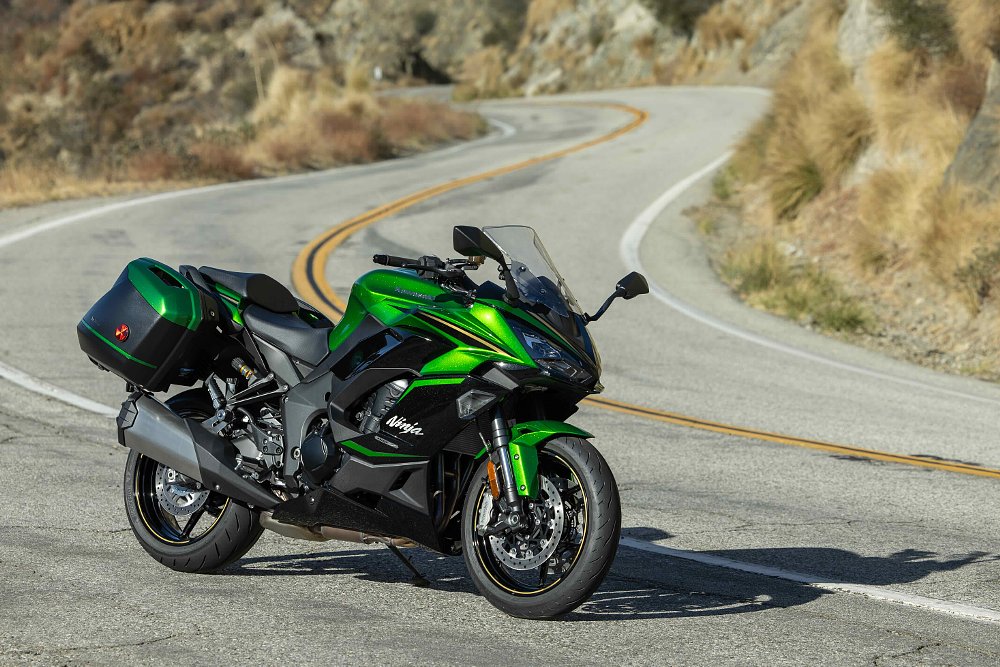
Kawasaki’s Ninja 1100SX SE has some of the same letters in the name and some of the same potential on the road, as Ari reviewed in his first ride on the updated Ninja 1100 earlier this year. It has a strong engine, larger than the H2 SX though not supercharged, a reasonable riding position, good features, and solid sporting potential.
Ari picked it apart a little bit, mostly for evolving into a better version of itself while somehow maintaining most of its flaws — crummy mirrors, paltry wind protection, and undercalibrated rider aids being most prominent. Still, we had both bikes in the RevZilla West garage at the same time and an errand to run a couple of hours away. And so the comparison began.

Aside from both being green, there were some surprising similarities. For example, the mirrors on the two bikes are completely different designs but hold true to the same philosophy of not doing a good job showing what’s behind. Too small, and too far from the rider’s face which narrows the field of view even more. Impressive alignment in Kawasaki engineering.
Mostly, though, there are differences. First, despite a slightly taller seat, the H2 SX feels wide, low, and long compared to the Ninja 1100. It’s wider between the knees, the bars are set lower and farther apart, the seat is a lot more supportive, and the fairing is much more substantial. The Ninja 1100 feels narrow and spartan by comparison, including the optics from the saddle, where there’s not much plastic in front of the rider aside from the thin (albeit adjustable) windshield.
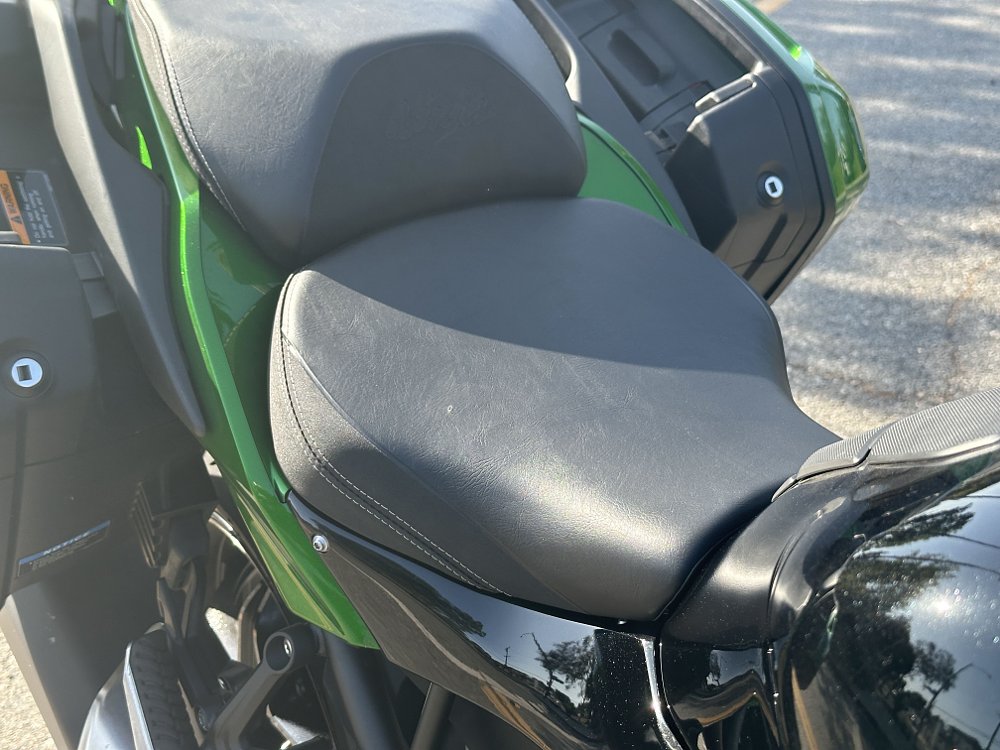
Neither ergonomic or wind-protection setup is necessarily right or wrong, they’re just different. The Ninja 1100 puts the rider significantly more upright and almost feels like a sport-naked in the way it leaves the rider in the wind. On the H2 SX you’ll feel some combination of late-’90s sport bike and Olympic bobsled; hunkered down with only shoulders and helmet exposed to the wind.
Then there’s the suspension, which is considerably more supple and refined on the H2 SX. The fork doesn’t dive as dramatically on the brakes and the whole chassis feels more stable and composed over mid-corner bumps. It’s a case of the supercharged, flagship machine feeling a lot more premium and sophisticated, and nobody should be surprised.
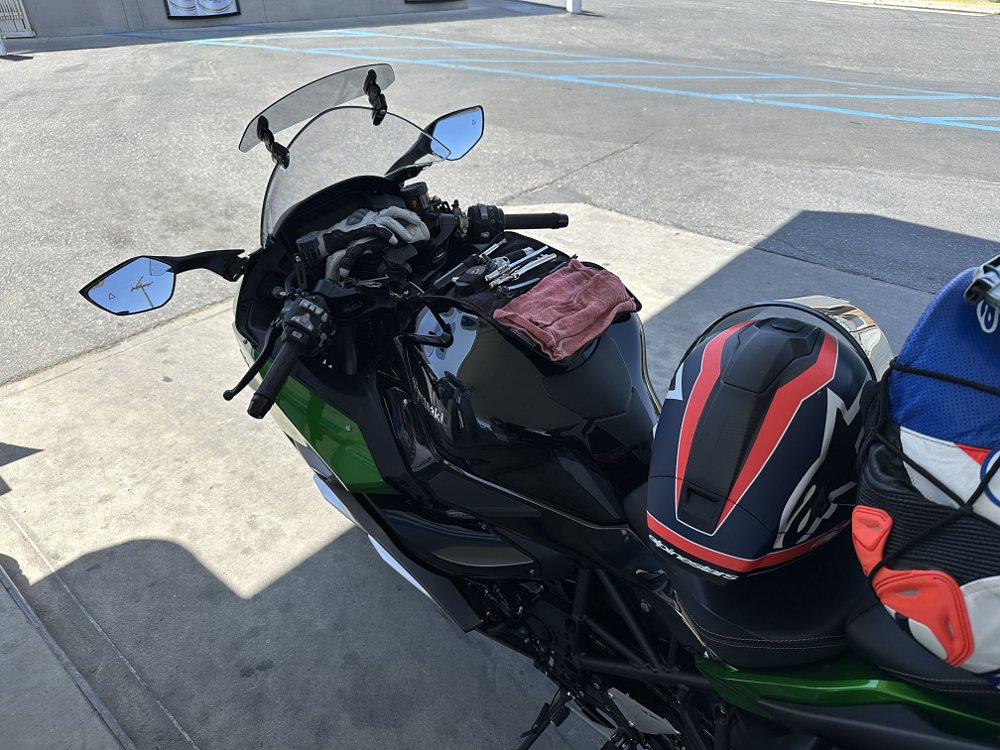
The two different dash units, both TFT, offer a good microcosm of the comparison between the two machines. A standard, five-inch unit does the job on the Ninja 1100, the same piece that’s fitted to a handful of other Kawasaki models. The H2 SX gets a 6.5-inch screen that’s noticeably brighter and more crisp.
Perhaps most important of all is how the two engines compare, because they are both good. Something that will be underappreciated by anyone who hasn’t ridden these things back to back is the ridiculously smooth character of the H2 mill. I know I mentioned it before but it’s worth repeating how amazingly refined the supercharged engine feels — it’s quilted with some kind of perfection that most inline-fours can’t match. Where the Ninja 1100 has pockets of the rev band where the vibrations diminish, it also has noticeable hot spots (above 7,000 rpm it puts out a lot of vibes). The H2 will pull from nearly anywhere in the rev band with velvety thrust and practically never feels strained.
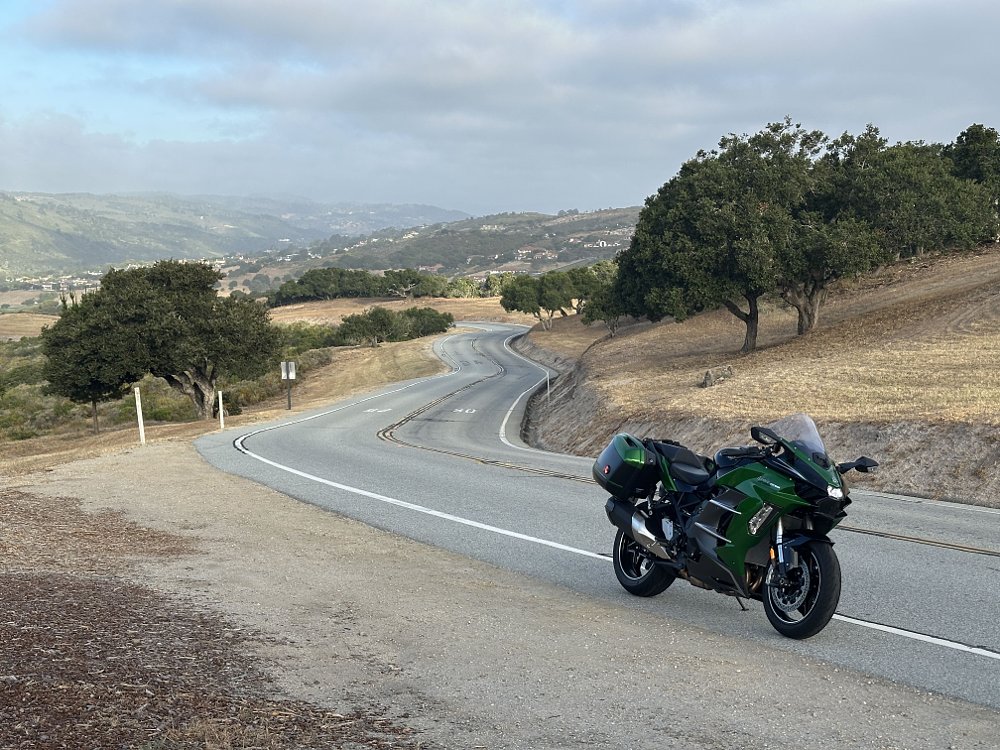
It’s clear that the Ninja 1100 engine is outmatched, or it was until we did a top-gear roll-on acceleration test at 70 mph. Against everything we expected, the Ninja 1100 slowly walked away from the H2 SX. Another roll-on test at 70 mph in third gear (instead of sixth), and the H2 eased away exponentially as the engines hit five-digit revs. The H2 SX has hotter engine tuning and it needs more rpm to show its potential, but the fact that the Ninja 1100 held its own was surprising.
A Ninja paradox
Being a Kawasaki Ninja is a lot more complicated than it used to be. If we include electrics and hybrids and supercharged machines, there are around a dozen bikes carrying the famous Ninja name. That means there’s bound to be overlap. And that’s OK, to some extent, but it can make for some awkward conversations around which bike is “better.”
Riding the two back to back, they are broadly similar, no doubt. But, they are also different in almost every specific way. It almost felt like two teams at Kawasaki were given a brief to create a 1,000 cc sport-touring bike that was as awesome as possible and they weren’t allowed to talk to each other the whole time. One team took an entirely practical route and ended up with the Ninja 1100, while the other went with the exotic, fire-and-brimstone approach. Neither one is wrong, but one sure does make a lot more sense than the other.

All spec’d out for the two test bikes we rode, the H2 SX SE came out to a little under $31,000. The Ninja 1100SX SE rang in just shy of $16,800. It might be hard to argue that the Ninja 1100SX SE is a better bike outright, but it’s pretty much impossible to suggest that it’s only 54% as good as the H2 SX SE.
Riding the H2 SX SE is an awesome experience — it’s a bike that offers a blend of speed, luxury, technology, and sound that sets it apart from anything else in the motorcycling world. But, you have to appreciate each and every one of those things for it to justify the ergonomic and financial commitment. If you simply want capability, iconic green paint, and the Ninja name, your humble — and incredibly good — Ninja 1100SX awaits.
| 2025 Kawasaki H2 SX SE | 2025 Kawasaki Ninja 1000SX SE | |
|---|---|---|
| Base Price (MSRP) | $29,100 | $15,399 |
| Engine | 998 cc, liquid-cooled, supercharged, 16-valve, inline-four | 1,099 cc, liquid-cooled, 16-valve, inline-four |
|
Transmission, final drive |
Six-speed, chain | Six-speed, chain |
| Claimed horsepower | 207.0 hp @ 10,000 rpm | 134.0 @ 9,000 rpm |
| Claimed torque | 101.0 lb-ft @ 8,500 rpm | 83.2 foot-pounds @ 7,600 rpm |
| Frame | Steel-tube trellis | Aluminum twin-spar |
| Front suspension | Showa 43 mm fork, adjustable for spring preload, electronically adjustable compression and rebound damping; 4.7 inches of travel | KYB 41 mm fork, adjustable for spring preload, compression and rebound damping; 4.7 inches of travel |
| Rear suspension | Showa shock, electronically adjustable for spring preload, compression and rebound damping; 5.4 inches of travel | Öhlins shock, adjustable for spring preload and rebound damping; 5.4 inches of travel |
| Front brake | Brembo Stylema four-piston calipers, 320 mm discs with ABS | Brembo M4.32 four-piston calipers, 300 mm discs with ABS |
| Rear brake | Nissin single-piston caliper, 250 mm disc with ABS | Nissin single-piston caliper, 250 mm disc with ABS |
| Rake, trail | 24.7 degrees, 4.1 inches | 24.0 degrees, 3.9 inches |
| Wheelbase | 58.3 inches | 56.7 inches |
| Seat height | 32.9 inches | 32.1 inches |
| Fuel capacity | 5.0 gallons | 5.0 gallons |
| Tires | Bridgestone Battlax S23; 120/70R17 front, 190/55R17 rear | Bridgestone Battlax S23; 120/70R17 front, 190/55R17 rear |
| Measured weight w/ bags (+17 lbs.) | 610 pounds | 532 pounds |
| Available | Now | Now |
| Warranty | 12 months | 12 months |
| More info | kawasaki.com | kawasaki.com |






